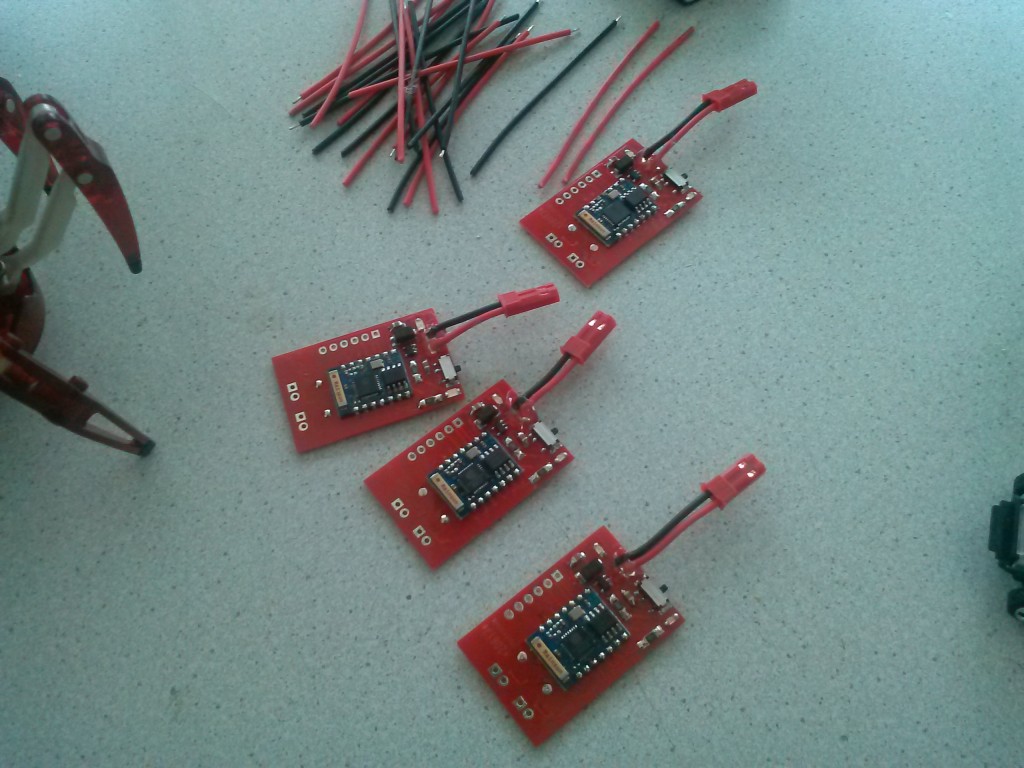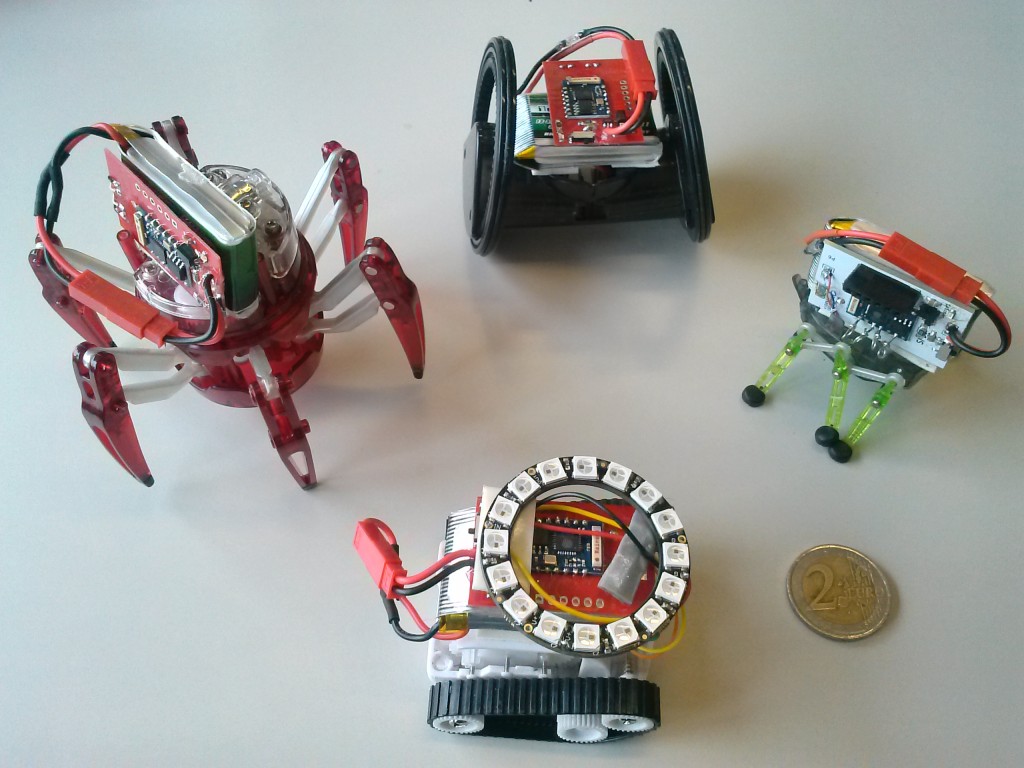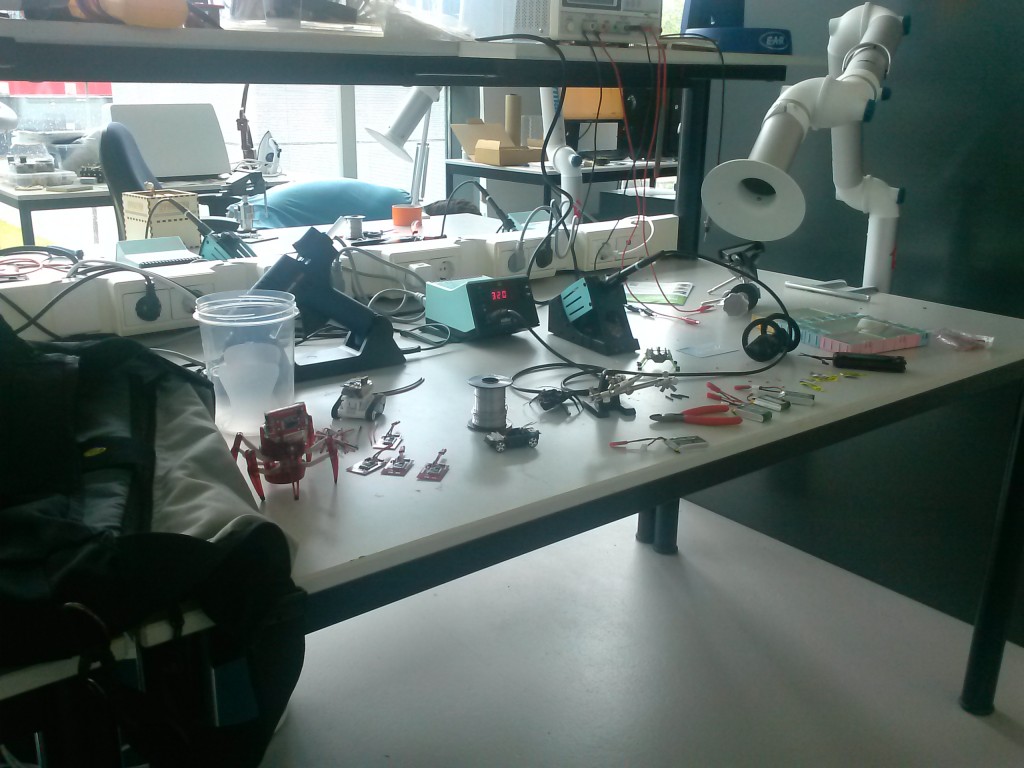I am a visiting PhD student from the robotics lab at the University of Massachusetts Lowell, and my PhD work is in swarm robotics. As part of that work, I have developed a small circuit board that can be used to replace the control electronics of a child’s toy and turn it into a small swarm robot.
The intent of this part of the project is to build a small robot that can be used for research projects with heterogeneous swarms, at low cost. If you want homogeneous swarms, the kilobot project has you covered, and if you don’t care about cost, get E-Pucks.
Each robot is powered by a single lithium polymer (Li-Po) battery, and I had planned to simply cut the connector off the the end of the battery leads and connect solder the leads to the circuit board.
This process made me very nervous every time I did it, because if the leads short out, a fuse inside the battery blows, which kills the battery. Without that fuse, the battery would probably catch fire. Li-Po battery fires have destroyed a couple of people’s cars and houses, and the first rule of the lab I work in is “Don’t burn down the lab”.



My solution was to put connectors on the batteries, and mating connectors on the circuit boards. I brought the tiny robots, their control boards, connectors, and the batteries to the DesignLab and put them all together. While I was working, I made sure that no more than one battery lead was exposed, so I couldn’t have short circuits.
I’m pleased to announce that the robots are all working (more or less, I still have to work out some software bugs), and ready to go back to the USA to be a part of my research.
If you would like to see more about the robots or the development of my PhD work, I keep everything in github.





